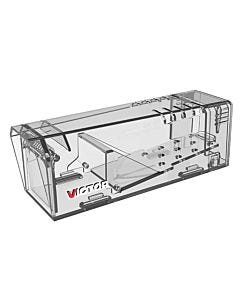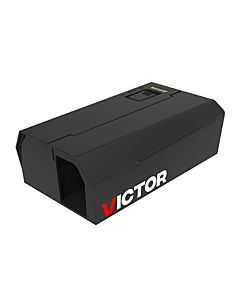How to Catch a Mouse

Like a magician divulging his best tricks, an experienced pest-control professional shares top strategies for how to get rid of mice and prevent future invasions—including what he does to keep his own home mouse-free.
Martin Overline was assigned 37 years ago by the U.S. Air Force to trap mice on air bases, and he's been learning about the pests ever since. Today, he's the owner of Aardvark Pest Management in Philadelphia and a nationally recognized expert on rodent control. Here are his tips for how to get rid of mice in a home.

1 Find the Entrance
Overline first checks around the plumbing, wiring, cable, and other infrastructure that leads out of a house. He's looking for gaps as small as a dime, through which mice can squeeze in and out. He also scans the foundation of the house and around the garage door for mouse-size gaps. In all these places, he checks carefully for mouse poop and other evidence of their activity.
Pro Mouse-Control Tip: Stuff copper mesh into gaps, then seal with caulk. "Don't try to fill them with foam," Overline warns. "I've seen mice nesting in it."

2 Search for Oil
Mice leave behind an oily substance wherever they go, he says. The oil, known as sebum, shows other mice the path to food sources and nesting spots. It lingers for up to a year. "I see the greasy, grimy trail around the holes that they use as they move around your house, on floors, and inside cabinets," Overline says.
Pro Mouse-Control Tip: Use a strong disinfectant to clean areas where you've seen grimy trails and mouse poop, especially around their entry points, so that new mice don't find their way in after you've trapped those already in your home. Also thoroughly clean up and disinfect anyplace you see mice droppings, as their location also communicates to other mice.

3 Set Many Traps
After Overline identifies the patterns of mice's movement in a house, he sets a lot of classic snap traps, like the Victor® Metal Pedal Mouse Trap, concentrating on the kitchen, laundry room, and garage. "If you have a drop ceiling, I'm putting mouse traps up there too," he says. "That's a paradise for mice."
Pro Mouse-Control Tip: Mice breed so quickly that you always have more than one. "For every mouse you see, you want to set a dozen mouse traps around your house," Overline advises.

4 Mix the Baits
Peanut butter works as mouse trap bait because mice primarily eat nuts and seeds, but they're attracted to many high-protein foods and sweets. "Mice are naturally curious and want to taste new food," Overline says. You can also take out the guess work and use our pre-baited Victor® Easy Set® Mouse Trap.
Pro Mouse-Control Tip: Vary the mouse trap baits you use to appeal to their natural curiosity. Hazelnut spread, chocolate, and the food mice have been feeding on in your house also will lure them to your mouse traps. In fall and winter, breeding females gather fibrous materials to build nests, so they're attracted to mouse trap baits such as dental floss, cotton, and yarn, Overline notes. For more information on mouse baits, visit our mouse baiting guide.

5 Keep on Trapping
Overline leaves a few "early warning" mouse traps in place even after a house has been cleared of mice. "If mice have been in your house before, there's a good chance one or two will try again from time to time," he says. "If you catch the first couple, you can step up the number of mouse traps you've set and stop a full invasion before it starts."
Pro Mouse-Control Tip: Leave set mouse traps at all times in your basement, attic, and garage, and on top of those drop ceilings, which are the most common access points for mice in your house. "I keep about eight mouse traps set in my own house at all times," Overline says.

6 Secure Your Food
Before Overline leaves clients' homes, he tells them one simple, hard truth about mice. "There's only one way to keep mice from returning to your house," he says. "Secure every food source. Everything else you do will fail if you don't do that."
Pro Mouse-Control Tip: Put all the food stored outside your refrigerator into sealed plastic, glass, or metal containers. Don't count on cardboard packaging, which mice can gnaw through. Kibble and other dry food left out in pets' bowls are easily accessible to mice, so be sure to discard or store any leftovers right away. The pests often find bags of pet food and birdseed in homes too. They need to be securely stored to stop mice from feeding on them. "Another food source you have to get rid of is seeds that get stuck to the lawn mower when you're cutting the grass," Overline says. "That can be the food that first attracts them into your house."




